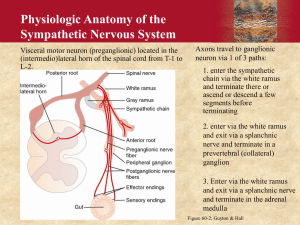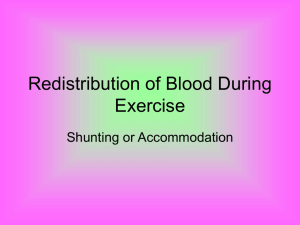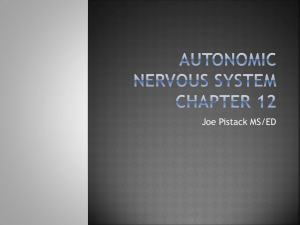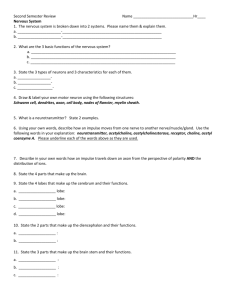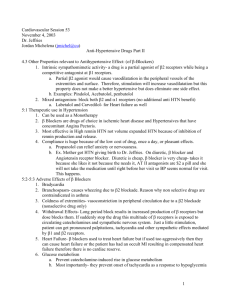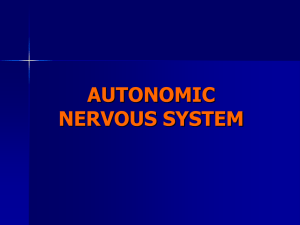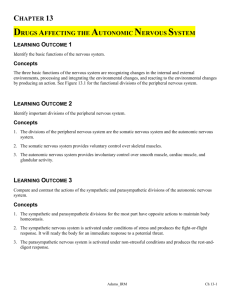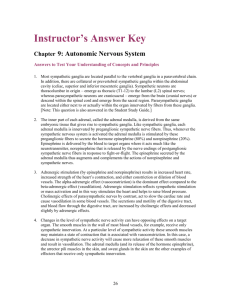Cardiovascular control mechanism
advertisement
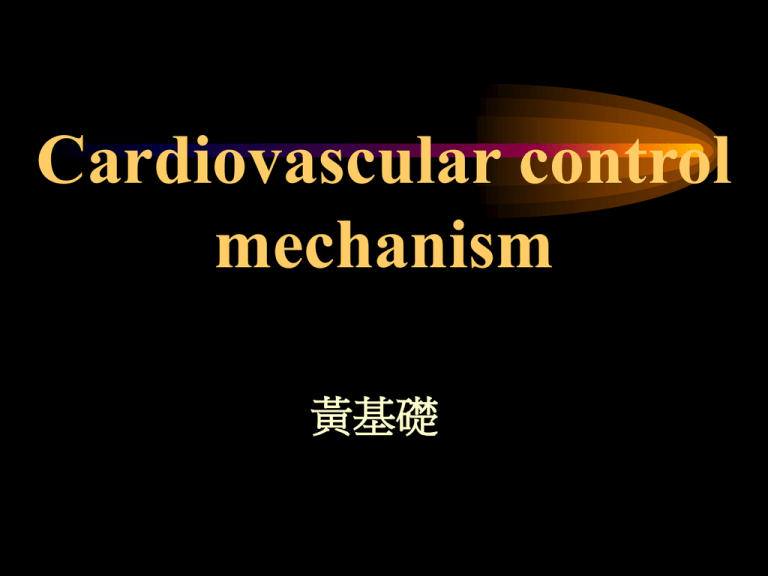
Cardiovascular control mechanism 黃基礎 Introduction • Control of blood volume and arterial pressure results in that all of the organs receive sufficient blood flow. Central controller Sensory nerve Sympathetic nerve Parasympathetic n Sensor Effector Changes in BP Heart and arteriole Circulatory control system Sensors • The animal body employs a variety of receptors for monitoring the status of the cardiovascular system. • There are two main baroreceptors aortic baroreceptor via vagus nerve carotid baroreptor via sinus nerve An increase in blood pressure stretches the wall of the carotid sinus, causing an increase in discharge frequency from the baroreceptors. Chemoreceptors Increase in CO2 + Chemorecpeotr vasoconstriction A rise in arterial pressure Cardiac receptors • Atrial receptors Increase in BP Increase in venous pressure Increase in atrail filling Stimulate the atrial receptors Reduction in blood volume Leasd to diuresis Inhibition of ADH release Cardiac receptors • Atrial receptors Increase in BP Increase in venous pressure Increase in atrail filling Strtch the the atrial wall Reduction in blood volume Cause an increase In urine production and sodium excretuib Cause atial myocytes to secrete ANP ANP _ Renin release ADH release Reduce Cardiac Output Reduce BP Antagonize the pressor effect of angiotensin Central nervous system • Medullaray CV center 1. Pressor and depressor center 2. Cardioaccerator center 3. Cardioinhibitory center Central nervous system • Autonomic nervous system (ANS) 1. Sympathetic preganglionic fibers arise from cell bodies in the IML of the spinal cord of the thoracodorsal regions • Autonomic nervous system (ANS) 2. The stellate ganglion supplies postganglionic sympathetic fibers to the heart 3. All of preganglionic sympathetic fibers are cholinergic but the postganglionic sympathetic fibers are adrenergic or cholinergic • Parasympathetic nervous system 1. The primary effect of the parasym. n. s. on CV function is to slow the heart rate. 2. Impulses conducted by the vagus nerve affect the S-A node, A-V node and reduce artial contractivitility Neural pathways for thr BP control NTS: nucleus tractus of the solitarius Medullary cardiovascular center Control of microcirculation • Capillary blood flow has to be adjusted to meet the demands of the tissue. • Two control mechanisms 1. Neural control 2. Local control Neural control of capillary blood flow • Sympathetic stimulation and catcholamine Stimulation of alpha receptors Stimulation of beta receptors vasodilatation vasoconstriction Vasoconstriction activated by -adrenergic receptors would override vasodilatation by adrenergic receptors • Neuropeptide Y 1. co-localized with norepinephrine within sympathetic ganglion and adrenergic nerve 2. nerve endings that surrounded the atrial and ventricular myocytes and the coronary arteries contain neuropeptide Y 3. NPY decrease coronary blood flow and the contraction of cardiac muscle by reducing the level of IP3 • Parasympathetic stimulation cause to vasodilation in arterioles Local control of capillary blood flow • Endothelium-produced compounds endothelium can produce NO, endothelin, and prostacyclin to affect the activity of the smooth muscle and hence, to regulate the capillary blood flow Endothelium-derived relacing factor (now known NO) cGMP Muscle relaxation Local control of capillary blood flow • Endothelin can produce vasoconstriction prostacyclin can initiate vasodilation and act as an anticoagulant. Prostacyclin functions as an antagonist of the thromboxane A2 ,which promotes blood clotting and causes vasoconstriction. Influammators and other mediators thromboxane A2 cause vasoconstriction histamine and kinin produce vasodilatation • Histamine, bradykinin, and serotonin cause an increase in capillary permeability • Metabolic condition associated with activity decrease in O2, increase in CO2, and H+, a variety of metabolites (adenosine) , heart, rise in extracellular K+ , NO, prostacyclin all of the above substances produce vasodilation and a local increase in capillary blood flow.
